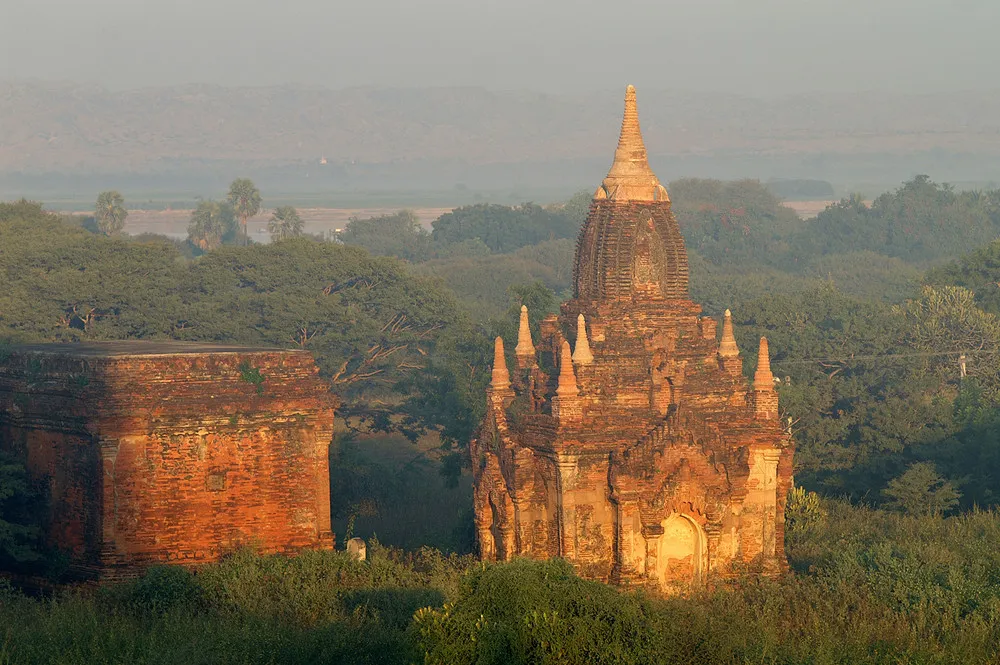|
Pagan Kingdom, Myanmar
|
||
|
The Kingdom of Pagan (also commonly known as the Pagan Dynasty and the Pagan Empire) was the first kingdom to unify the regions that would later constitute modern-day Burma (Myanmar). Pagan's 250-year rule over the Irrawaddy valley and its periphery laid the foundation for the ascent of Burmese language and culture, the spread of Burman ethnicity in Upper Burma, and the growth of Theravada Buddhism in Burma and in mainland Southeast Asia.
The kingdom grew out of a small 9th-century settlement at Pagan (Bagan) by the Mranma (Burmans), who had recently entered the Irrawaddy valley from the Kingdom of Nanzhao. Over the next two hundred years, the small principality gradually grew to absorb its surrounding regions until the 1050s and 1060s when King Anawrahta founded the Pagan Empire, for the first time unifying under one polity the Irrawaddy valley and its periphery. By the late 12th century Anawrahta's successors had extended their influence farther to the south into the upper Malay peninsula, to the east at least to the Salween river, in the farther north to below the current China border, and to the west, in northern Arakan and the Chin Hills. In the 12th and 13th centuries, Pagan, alongside the Khmer Empire, was one of two main empires in mainland Southeast Asia.
Wikipedia
|
||
|
|

|
|
| ← Previous picture Next picture → | ||
|
Military Woman Gallery
Must See Places |
||
|
|
||